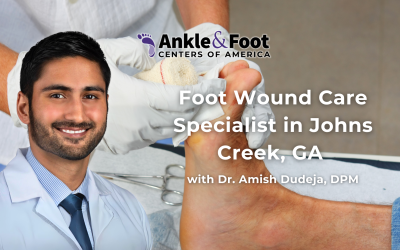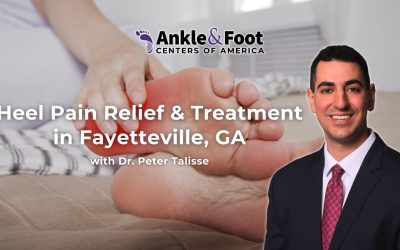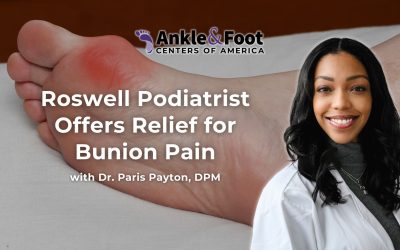If you’re feeling a sharp, burning pain in the ball of your foot—especially between your toes—you might be experiencing Morton’s neuroma. This common condition can make every step uncomfortable. The good news? Effective treatments are available to relieve your pain and help you move comfortably again.
From custom Morton’s neuroma insoles to advanced surgery for Morton’s neuroma, treatment options are available to match your unique needs. Whether you’re just starting to feel symptoms or you’re exploring neuroma surgery after conservative care hasn’t worked, knowing what kind of doctor treats Morton’s neuroma—and where to find expert care—can make all the difference.
Table of Contents
What is Morton’s Neuroma?
Morton’s neuroma is a painful condition that affects the ball of the foot, most commonly between the third and fourth toes. It occurs when the tissue around one of the nerves leading to your toes thickens, causing sharp, burning pain or a sensation like you’re standing on a pebble.
You might also feel tingling, numbness, or a “clicking” feeling when walking. These symptoms often worsen with tight shoes or prolonged standing. While the exact cause isn’t always clear, contributing factors can include wearing high heels, repetitive stress, flat feet, or foot deformities.
Morton’s neuroma can range from mildly irritating to severely painful. Fortunately, early diagnosis and proper Morton’s neuroma treatment can help stop the condition from progressing and improve your quality of life.
What Kind of Doctor Treats Morton’s Neuroma?
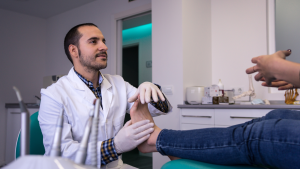 Podiatrists are doctors who specialize in diagnosing and treating conditions that affect the feet and ankles. They have the training and experience to evaluate your symptoms, ordered diagnostic imaging if needed, and recommend the most effective Morton’s neuroma treatments—from conservative options to advanced surgical care.
Podiatrists are doctors who specialize in diagnosing and treating conditions that affect the feet and ankles. They have the training and experience to evaluate your symptoms, ordered diagnostic imaging if needed, and recommend the most effective Morton’s neuroma treatments—from conservative options to advanced surgical care.
Seeing a podiatrist early can help you avoid unnecessary pain and prevent the condition from getting worse. If you’re in the Calhoun area, our experienced podiatrist is ready to help you find relief and get back to walking comfortably.
Non-Surgical Morton’s Neuroma Treatment Options
Not every case of Morton’s neuroma requires surgery. In fact, many patients find relief with conservative, non-invasive options. Your Calhoun podiatrist will start by evaluating your symptoms and creating a personalized treatment plan. Here are some of the most effective non-surgical Morton’s neuroma treatments:
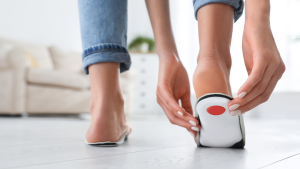 Morton’s Neuroma Insoles & Orthotics
Morton’s Neuroma Insoles & Orthotics
Custom shoe inserts help relieve pressure on the affected nerve and improve foot alignment. These specially designed Morton’s neuroma insoles offer targeted support and cushioning right where you need it most.
Footwear Modifications
Switching to shoes with a wider toe box and lower heel can reduce irritation. Proper footwear plays a big role in easing pain and preventing symptoms from worsening.
Activity Modifications
Avoiding high-impact activities, such as running or jumping, can help reduce inflammation around the nerve. Your podiatrist may recommend low-impact alternatives while you heal.
Medication & Injections
Anti-inflammatory medications or corticosteroid injections may be used to reduce pain and swelling in the affected area.
Physical Therapy
Stretching, massage, and other manual techniques can help relieve nerve pressure and improve foot function.
These Morton’s neuroma treatments are often effective when started early. If pain persists after trying these options, your podiatrist may recommend exploring surgery for Morton’s neuroma.
When is Surgery for Morton’s Neuroma Necessary?
 While many people respond well to non-surgical care, some cases of Morton’s neuroma require a more permanent solution. So when is it time to consider surgery for Morton’s neuroma?
While many people respond well to non-surgical care, some cases of Morton’s neuroma require a more permanent solution. So when is it time to consider surgery for Morton’s neuroma?
If you’ve tried conservative Morton’s neuroma treatments—such as insoles, footwear changes, and injections—without relief, your podiatrist may recommend neuroma surgery. This option is typically considered when pain becomes chronic and interferes with daily activities like walking, standing, or exercising.
Morton’s neuroma surgery is usually an outpatient procedure performed by a podiatrist. It involves removing the thickened nerve tissue to relieve pressure and pain. The procedure is safe and effective, with many patients reporting significant improvement in symptoms.
Morton’s Neuroma Surgery Recovery
Recovery from Morton’s neuroma surgery can vary, but most people return to normal activity within a few weeks. You may need to wear a protective shoe and limit weight-bearing at first. Swelling and mild discomfort are normal, but they typically improve quickly with rest and proper care. Your podiatrist will guide you through each step of the Morton’s neuroma surgery recovery process to ensure a smooth and successful outcome.
Why Choose a Calhoun Podiatrist for Morton’s Neuroma Treatment?
When it comes to relieving foot pain and restoring mobility, experience matters. Choosing a local podiatrist in Calhoun means you’re getting care from a specialist who understands how Morton’s neuroma affects your everyday life—and who offers advanced treatment options tailored to your needs.
Our Calhoun podiatrist provides expert care, whether you’re exploring Morton’s neuroma insoles, seeking conservative treatment, or considering neuroma surgery. From diagnosis to recovery, you’ll receive compassionate, personalized care every step of the way.
Patients throughout the community trust us for our professionalism, knowledge, and results. Don’t just take our word for it—read patient reviews and learn more about Dr. Sindhu Srinivas by visiting this link.

Conclusion
Don’t let Morton’s neuroma keep you from doing the things you love. If you’re dealing with burning, tingling, or sharp pain in the ball of your foot, now is the time to take the next step toward relief.
Our Calhoun podiatrist is ready to help—from accurate diagnosis to customized treatment and long-term recovery support. Whether you need orthotics, lifestyle adjustments, or surgical options, we’ll guide you every step of the way.
Take control of your foot health today—schedule your appointment and start walking pain-free again. Relief is closer than you think.




